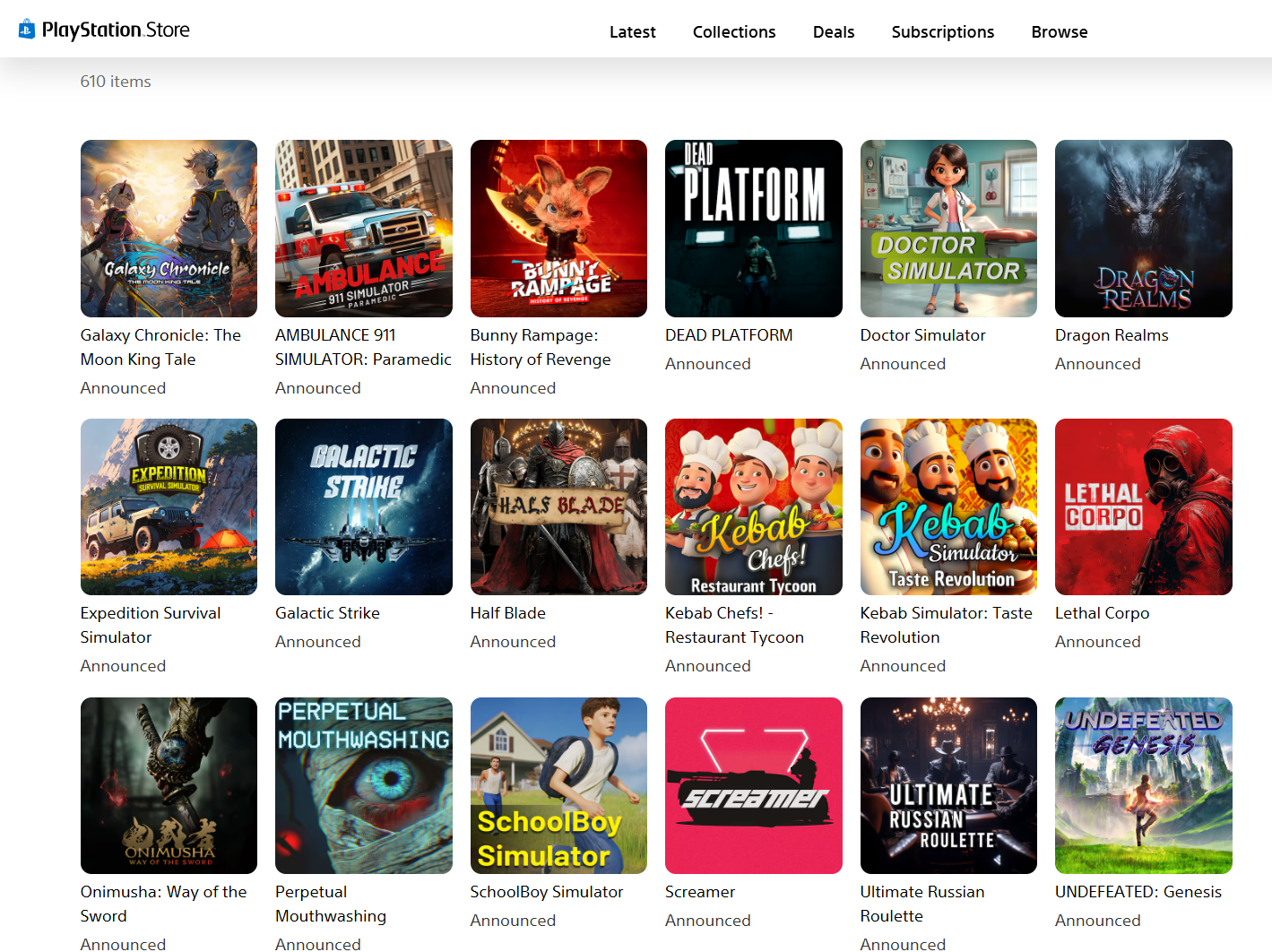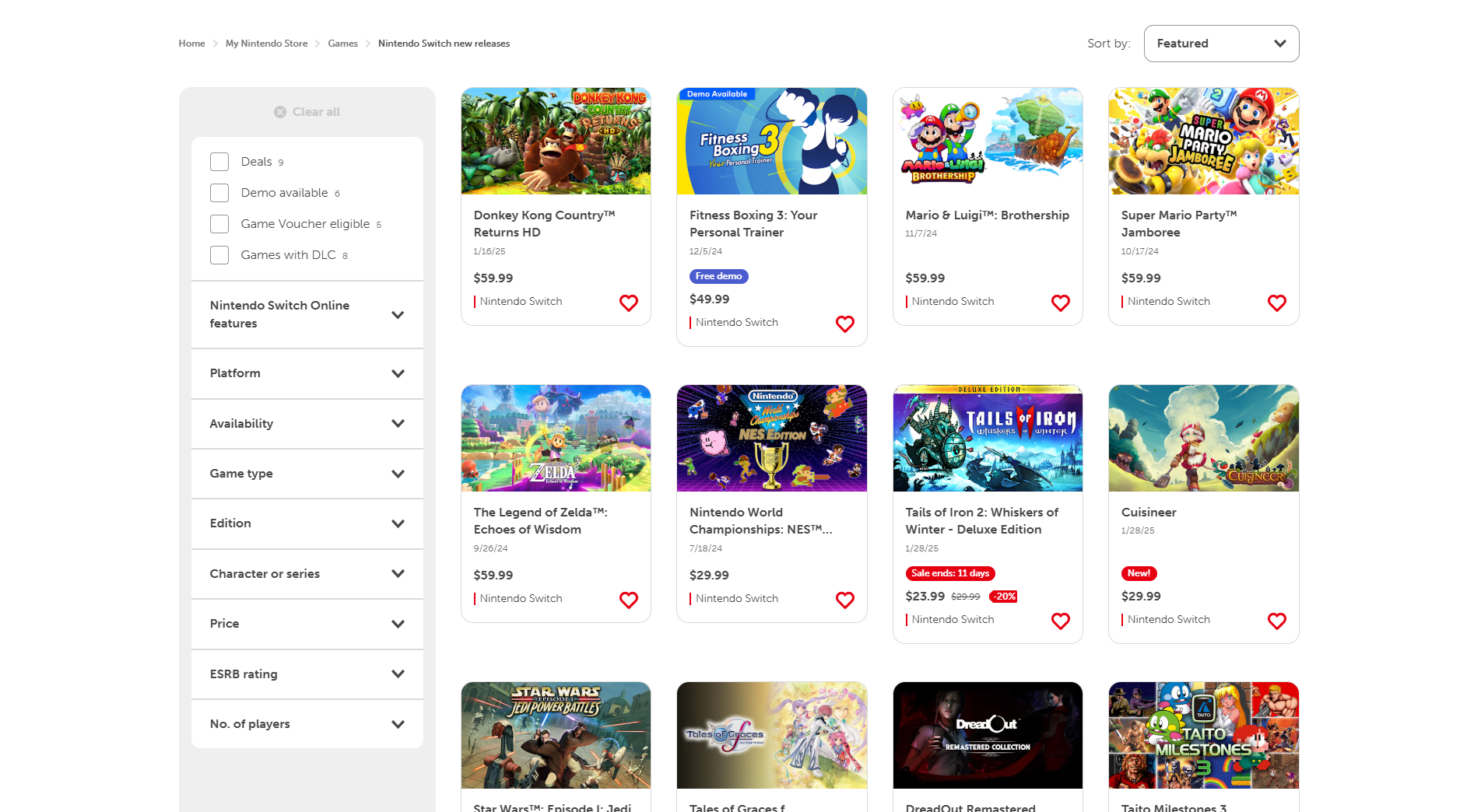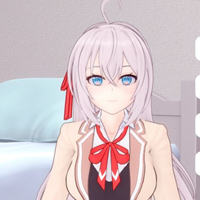The PlayStation Store and Nintendo eShop are experiencing an influx of low-quality games, dubbed "slop," often utilizing generative AI and misleading marketing. This issue, detailed by Kotaku and Aftermath, has spread to PlayStation, particularly impacting the "Games to Wishlist" section. These aren't simply "bad" games; they're remarkably similar, perpetually discounted, often mimicking popular titles, and featuring AI-generated assets that misrepresent gameplay. A small number of companies, difficult to identify and hold accountable, appear responsible for this surge.
This article investigates the causes of this problem across various storefronts: the certification process, store page review procedures, and the unique approaches of each platform.
The Certification Process:
The process of getting a game onto these storefronts involves pitching to the platform holder (Nintendo, Sony, Microsoft, or Valve), completing forms detailing the game's technical aspects, and undergoing certification ("cert"). Cert verifies compliance with technical requirements, legal standards, and ESRB ratings. While platform holders emphasize age rating accuracy, the cert process itself isn't a QA check; that's the developer's responsibility. Nintendo is frequently cited for rejecting games with little explanation.
Store Page Review:
Platform holders require accurate game representation in screenshots. However, enforcement varies. While Nintendo and Xbox review store page changes, PlayStation performs a single check near launch, and Valve reviews only the initial submission. The standards for accurate representation are loosely defined, allowing many games to slip through. Consequences for misleading assets are typically limited to removal of the offending content, not delisting or developer removal. Importantly, none of the console storefronts have rules against generative AI use in games or store assets, although Steam requests disclosure.
Platform Differences:
The disparity in "slop" across platforms stems from different approval processes. Microsoft vets games individually, making it less susceptible to the problem. Nintendo, Sony, and Valve approve developers, allowing easier mass releases of games once approved. This, coupled with a lack of rigorous store page review, enables the proliferation of low-quality games. Nintendo's system is particularly vulnerable. Some developers exploit the system by repeatedly releasing similar bundles to maintain top placement in "New Releases" and "Discounts." PlayStation's "Games to Wishlist" sorting algorithm also contributes to the issue.
Steam, despite having potentially more "slop," faces less user backlash due to its robust search and filtering options and constantly updating new releases section. Nintendo's approach, in contrast, presents a large, unsorted mass of games.
Solutions and Concerns:
Users demand stricter regulation, but developers express concerns about potential overreach. While Nintendo Life's "Better eShop" filter attempted to address the issue, it faced criticism for incorrectly flagging legitimate games. Overly aggressive filters risk harming quality software. Developers emphasize that platform holders are ultimately individuals trying to balance allowing games while preventing exploitation, a task made difficult by the sheer volume of submissions. The Nintendo Switch 2's eShop may offer improvement, mirroring the more functional web browser version. Sony has taken action in the past, suggesting future intervention is possible. The core issue isn't solely generative AI, but also inadequate review processes and discoverability problems.








